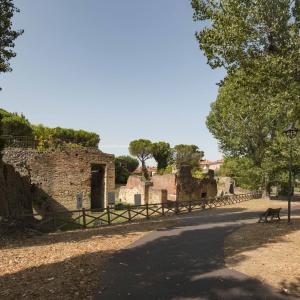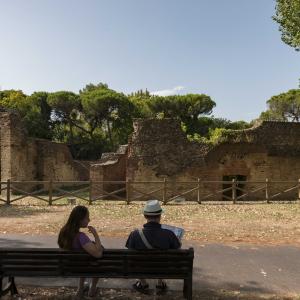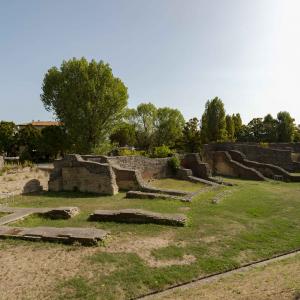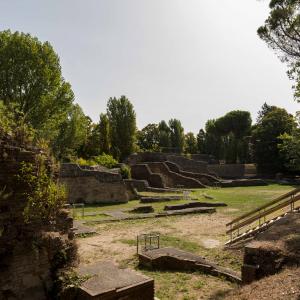Roman amphitheatre - Ruins
Together with Arco d'Augusto and the Ponte di Tiberio, this completes the triad of the city's main monuments dating from Roman times. Built under Hadrian in the 2nd century AD, as demonstrated by the discovery of a coin bearing the effigy of the Emperor in some masonry, it was uncovered following excavations in 1843-44, which were followed by the more important ones of 1926 and 1935.
What survives demonstrates that the amphitheatre in Rimini was certainly one of the most imposing in the region, as well as being the only one to partially survive in Emilia Romagna. The brick structure is elliptical in shape, with its main axis measuring 118 m and the smaller one 88 m; it consisted of four concentric rings with an overall thickness of 21,80 m. The size of the elliptical arena (73,76 m and 44,52 m) made it similar to that of the Coliseum. It was 16-17 m high and its external portico had 60 arches; two are still visible, incorporated into the walls when the city gave itself a new ring of defences against the Barbarian invasions. In the Middle Ages, it was used as allotments and in the 17th century as a lazaretto. It suffered the most serious damage during WWII. Of the great complex, which could originally accomodate up to 12,000 spectators, you can still see the two arches of the esternal portico and part of the arena and the cavea.



